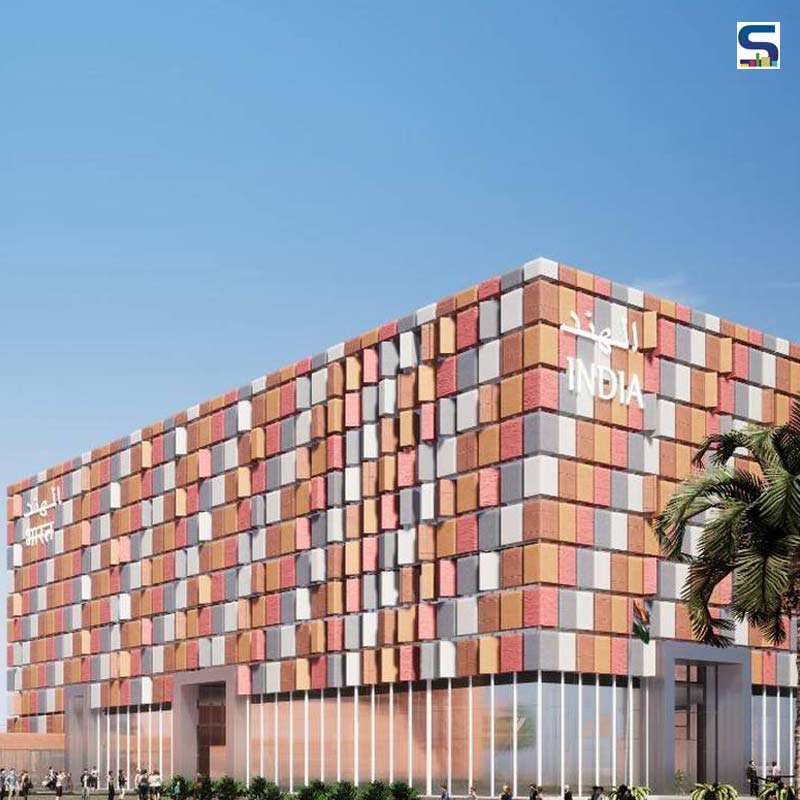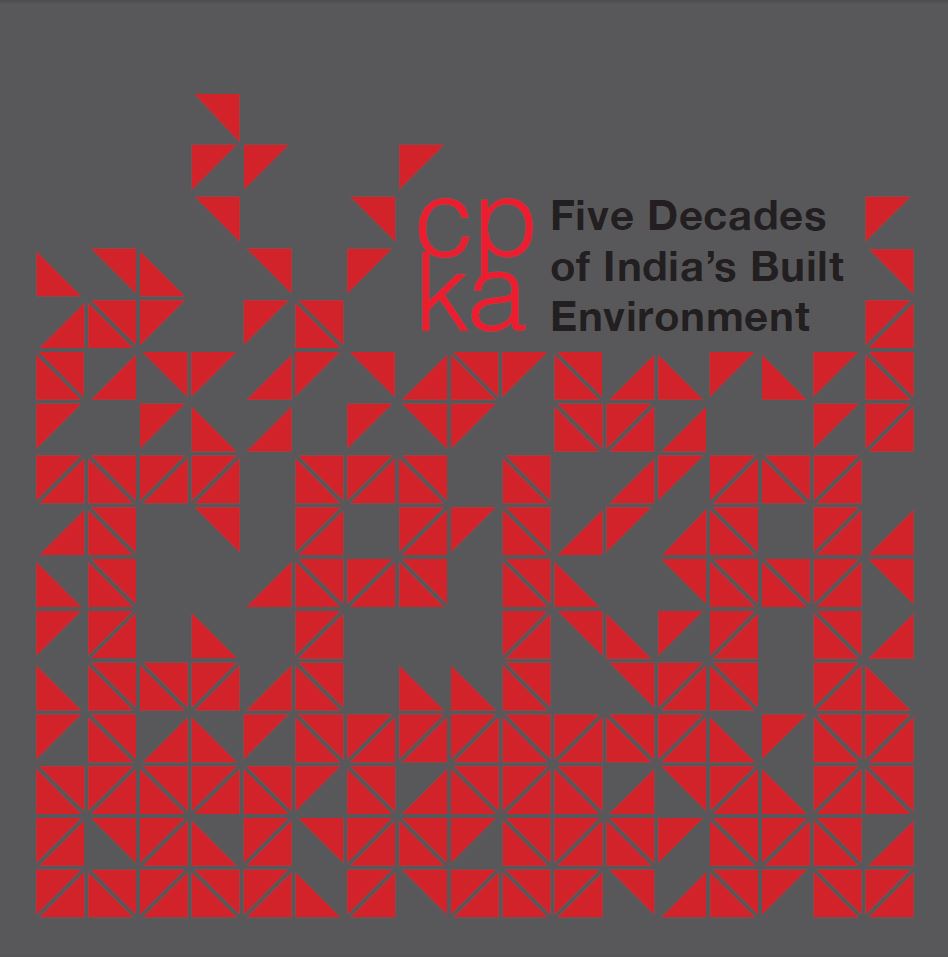
India Pavilion, one of the most visited pavilions at the World Expo 2020 Dubai recording a footfall of 3.5 lakh visitors in less than 50 days of inauguration, has been recognised as ‘One of the Most Iconic’ pavilions at the Expo. The Pavilion has achieved this coveted honor from the American Institute of Architects (AIA), a 164-year old international consortium of architects. Further, the event also included the unveiling of the book ‘Five Decades of India’s Built Environment’ by H.E. Dr. Aman Puri and Mr. Sherif Anis. Harvard alumni and Principal Architect of the Pavilion, Dikshu C Kukreja delivered an in-depth discourse on the ‘Making of India Pavilion’. Scroll down to read the complete report at SURFACES REPORTER (SR):
Also Read: India Pavilion at Expo 2020 Dubai Designed by C P Kukreja Architects commemorates 75 Glorious Years Of Indias Independence
The India Pavilion designed by Harvard-graduated Dikshu C Kukreja is selected amongst five Pavilions at the Expo 2020 Dubai by AIA for the event, out of the total of 190 pavilions at display currently. Talking about the uniqueness of the pavilion, Daniel S. Hart, President American Institute of Architects, USA said, “What you’ve accomplished in this building is that it’s not just the architecture that you have created but the possibilities that it represents and you’ve done a beautiful job in making that manifest.” Sherif Anis, AIA Middle East Chapter Abu Dhabi, UAE Executive Director of Royal Institute of British Architects(RIBA), UK also talked about the iconism and uniqueness of India Pavilion design, “India’s rich history is hard to express in a single building but this pavilion has been able to do that very beautifully.”
Kinetic Facade Exhibits India' Rich Cultural Legacy and Advanced Technology
India Pavilion is one of the largest pavilions at the Expo Dubai 2020, at par with pavilions of countries such as the USA and China. It is one of the three Pavilions at the Expo which would be retained for posterity after the event and would be a part of the Legacy Phase, Dubai.
.jpg) The center of attraction is its distinctive facade comprising 600 individual blocks that move using kinetic architecture, representing a lively and progressive India that is today known worldwide not only for its cultural legacy but also for its new-age technology. The building tells the story of India using different lenses of trade, technology, tradition, tourism, and talent. In the evening, the façade turns into a vibrant show with sound, light and projections, almost as if hosting a festival. The design also celebrates India’s 75 years of Independence.
The center of attraction is its distinctive facade comprising 600 individual blocks that move using kinetic architecture, representing a lively and progressive India that is today known worldwide not only for its cultural legacy but also for its new-age technology. The building tells the story of India using different lenses of trade, technology, tradition, tourism, and talent. In the evening, the façade turns into a vibrant show with sound, light and projections, almost as if hosting a festival. The design also celebrates India’s 75 years of Independence.
A Beautiful Fusion of Diverse Opinions
The event was attended by architect delegates from across the world, Indian diaspora and dignitaries from Dubai and media. The Chief Guest at the event H.E. Dr. Aman Puri, Consul General of India, Dubai, commended the efforts of the AIA and Pavilion architects, “I thank the American Institute of Architects for choosing the India Pavilion as one of the best pavilions. It is a testament to the fact that a rather good job has been done and congratulations to the Chief Architect, Dikshu Kukreja for the same. India is home to 1/6th of humanity and in such a large country, there are several opinions and ideas. Architect Dikshu has done a brilliant job of dealing with this challenge and creating a pavilion which is a beautiful amalgamation of these opinions.”
Also Watch: Tale of Two Capital Cities | Ar. Dikshu Kukreja and Anuela Ristani | H.E. Mr. Rahul Shrivastava | Vertica Dvivedi X Aurela Cuku
Principal Architect of India Pavilion, Dikshu Kukreja talked about manifestation of India Pavilion design and five decades of India’s architecture development through his presentation at the Pavilion. Talking about the Pavilion he said, “Architecture is an amalgamation of creativity and engineering."
.jpg)
"For us, representing India on an international platform meant developing a design that creates a meaningful dialogue between the tangible and intangible aspects of the built form. This was a very unique project to work on because it is showcased on a global stage where you have an assortment of architecture from around the world.
Five Decades of India’s Built Environment
The event also included the unveiling of the book ‘Five Decades of India’s Built Environment’ by H.E. Dr. Aman Puri and Mr. Sherif Anis. The book is a compendium that documents the transformations that have taken place in the built environment of India.
What The Book Says-
India has been historically known for its repertoire in architecture and design. Post-Independence, the country struggled to come to its feet in terms of policies, economic direction and infrastructural development. Nonetheless, the country has witnessed tremendous transformation in its built environment in the past five decades.

Most projects in the seventies focused on providing housing and building townships, establishing industries and offices to provide work, and setting up institutions to empower people with education. With the onset of the eighties, the focus expanded to designing cultural centres and embassies, and interweaving them into the urban fabric. The nineties opened up opportunities in the country post-liberalization.
.jpg) One could sense a significant shift in the architectural design language, albeit retaining the vernacular sensibilities. Integration of a redefined ideology into the building’s fabric reformed working spaces, industrial facilities, institutional designs as well as façades of buildings. This period also showcased newness in building materials.
One could sense a significant shift in the architectural design language, albeit retaining the vernacular sensibilities. Integration of a redefined ideology into the building’s fabric reformed working spaces, industrial facilities, institutional designs as well as façades of buildings. This period also showcased newness in building materials.
.jpg)
A decade into the new millennium, technology metamorphosed by upgrading the functions and design sensibilities it was able to bring into architecture. Promoting sustainable development, the designs reflect a futuristic aesthetic where the structures are responsive to their environment. At the same time, the designs are also curated to address the present-day issues, bringing with it a sense of responsibility. In a surge for meaningful design responses in India’s urban environment while imbibing the tenets of sustainability, this book captures the transformations that have taken place in the country in the last five decades.
Keep reading SURFACES REPORTER for more such articles and stories.
Join us in SOCIAL MEDIA to stay updated
SR FACEBOOK | SR LINKEDIN | SR INSTAGRAM | SR YOUTUBE
Further, Subscribe to our magazine | Sign Up for the FREE Surfaces Reporter Magazine Newsletter
Also, check out Surfaces Reporter’s encouraging, exciting and educational WEBINARS here.
You may also like to read about:
The Dynamic Korea Pavilion is Made of 1,597 Rotating Cubes | Moon Hoon | Dubai Expo 2020
Bengaluru To Have World-Class ‘Design District’ Inspired by Dubai’s d3
UAE Pavilion at Dubai Expo Features The Shape of A Falcon Wing | Santiago Calatrava
Terra: A Sustainable Pavilion Revealed by Grimshaw at Dubai Expo That Generates Its Own Water and Energy
And more…